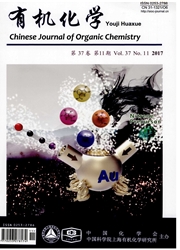Transfer Hydrogenation of C= C Double Bonds Catalyzed by Ruthenium Amido-Complexes: Scopes, Limitation and Enantioselectivity
- ISSN号:0253-2786
- 期刊名称:《有机化学》
- 时间:0
- 分类:O62[理学—有机化学;理学—化学]
- 作者机构:[1]Key Laboratory of Asymmetric Synthesis & Chirotechnology of Sichuan Province and Union Laboratory of Asymmetric Synthesis, Chengdu Institute of Organic Chemistry, Chinese Academy of Sciences, Chengdu 610041 Key Laboratory of Asymmetric Synthesis & Chirotechnology of Sichuan Province and Union Laboratory of Asymmetric Synthesis, Chengdu Institute of Organic Chemistry, Chinese Academy of Sciences, Chengdu 610041 Key Laboratory of Asymmetric Synthesis & Chirotechnology of Sichuan Province and Union Laboratory of Asymmetric Synthesis, Chengdu Institute of Organic Chemistry, Chinese Academy of Sciences, Chengdu 610041 Key Laboratory of Asymmetric Synthesis & Chirotechnology of Sichuan Province and Union Laboratory of Asymmetric Synthesis, Chengdu Institute of Organic Chemistry, Chinese Academy of Sciences, Chengdu 610041 Key Laboratory of Asymmetric Synthesis & Chirotechnology of Sichuan Province and Union Laboratory of Asymmetric Synthesis, Chengdu Institute of Organic Chemistry, Chinese Academy of Sciences, Chengdu 610041 Key Laboratory of Asymmetric Synthesis & Chirotechnology of Sichuan Province and Union Laboratory of Asymmetric Synthesis, Chengdu Institute of Organic Chemistry, Chinese Academy of Sciences, Chengdu 610041
- 相关基金:Project supported by the National Natural Science Foundation of China (Nos. 203900507, 20025205).

中文摘要:
The reduction of C = C double bonds is one of the most fundamental synthetic transformations and plays a key role in the manufacturing of a wide variety of bulk and fine chemicals. Hydrogenation of olefinic substrates can be achieved readily with molecular hydrogen in many cases, but transfer hydrogenation methods using suitable donor molecules such as formic acid or alcohols are receiving increasing attention as possible synthetic alternatives because it requires no special equipment and avoids the handling of potentially hazardous gaseous hydrogen.……


 中文摘要:
中文摘要:
 同期刊论文项目
同期刊论文项目
 同项目期刊论文
同项目期刊论文
 期刊信息
期刊信息
